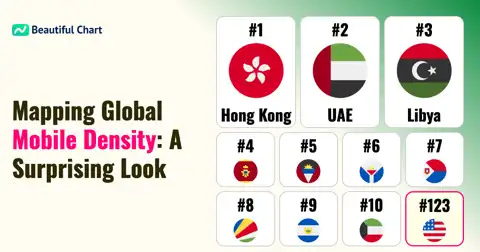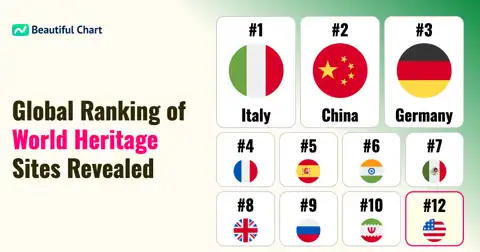The chart highlights the countries with the highest military spending as a percentage of their GDP in 2023. Ukraine leads the list, allocating an astounding 36.54% of its GDP to military expenses, followed by South Sudan with 14.75%. Other notable entries include Algeria, Saudi Arabia, and Armenia, all of which exceed 5% of their GDP in military expenditure. The data reflects geopolitical tensions and economic priorities across these nations.
Military spending as a percentage of GDP measures the proportion of a country's economic output dedicated to defense. It provides insights into national security priorities and the economic impact of military expenditures.
Military spending as a percentage of GDP serves as a key indicator of a nation's defense priorities and its response to regional or global security concerns. In 2023, Ukraine stands out significantly, dedicating 36.54% of its GDP to military expenditure. This is largely driven by its ongoing conflict and heightened defense needs. South Sudan, another high spender at 14.75%, reflects the enduring challenges of maintaining security in a post-conflict environment.
Among other countries, Algeria (7.46%) and Saudi Arabia (7.10%) underscore the role of military spending in addressing regional security concerns and asserting geopolitical influence. Notably, Russia (5.48%), a major global player, maintains a high military expenditure amidst its engagements in regional conflicts and broader security strategies.
In contrast, countries like the United States (3.35%) and the United Kingdom (2.24%) have lower percentages relative to their GDP but contribute significantly in absolute terms due to their large economies. Similarly, nations such as Indonesia (0.69%) exhibit minimal spending relative to GDP, reflecting different strategic priorities or economic constraints.
This distribution reveals stark contrasts in how nations prioritize military funding. While some allocate substantial portions of their economic resources to defense, others focus on alternative areas of development. These decisions are often shaped by a combination of external threats, historical context, and national policy objectives.
| Rank | Name | Indicator | Subindicator |
|---|---|---|---|
1 | 36.54% | GDP : $ 64B 753M | |
2 | 14.75% | GDP : $ 1B 76M | |
3 | 7.46% | GDP : $ 18B 264M | |
4 | 7.10% | GDP : $ 75B 813M | |
5 | 5.50% | GDP : $ 1B 329M | |
6 | 5.48% | GDP : $ 109B | |
7 | 5.40% | GDP : $ 27B 498M | |
8 | 5.36% | GDP : $ 5B 851M | |
9 | 4.81% | GDP : $ 2B 450M | |
10 | 4.79% | GDP : $ 7B 755M | |
11 | 4.65% | GDP : $ 3B 561M | |
12 | 4.05% | GDP : $ 826M | |
13 | 3.91% | GDP : $ 31B 649M | |
14 | 3.87% | GDP : $ 2B 493M | |
15 | 3.79% | GDP : $ 784M | |
16 | 3.64% | GDP : $ 464M | |
17 | 3.60% | GDP : $ 5B 184M | |
18 | 3.49% | GDP : $ 147M | |
19 | 3.35% | GDP : $ 916B | |
20 | 3.24% | GDP : $ 7B 729M |





